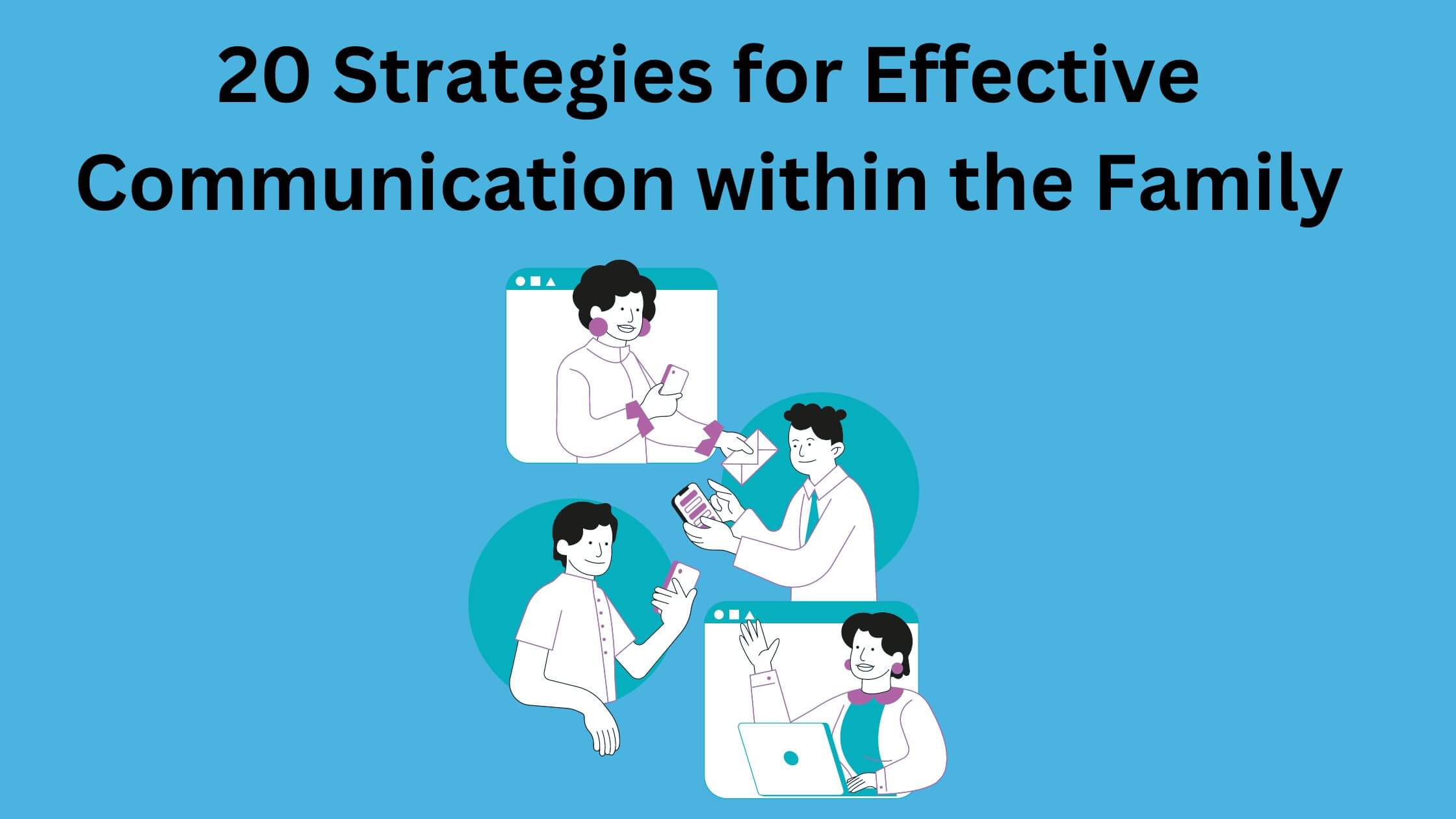Good communication is the foundation of any successful relationship, and family relationships are no exception. Effective family communication strategies can help build trust, resolve conflicts, and foster a sense of unity and understanding among family members. In this article, we’ll explore the best family communication strategies to help you strengthen your relationships and create a harmonious home environment.

Why Family Communication Matters
Effective communication is crucial in any family setting. When family members communicate effectively, they can:
- Build trust and understanding
- Resolve conflicts in a healthy and constructive manner
- Share feelings, thoughts, and ideas openly
- Show empathy and support for one another
- Create a sense of belonging and connection
On the other hand, poor communication can lead to misunderstandings, conflicts, and even estrangement. In extreme cases, it can result in family breakdowns and even mental health issues.
Top 10 Family Communication Strategies
Here are the top 10 family communication strategies to help you build strong and healthy relationships:
- Practice Active Listening
Active listening means paying attention to what the other person is saying, both verbally and nonverbally. This involves maintaining eye contact, nodding, and asking questions to clarify. By actively listening to your family members, you show that you value and respect their thoughts and opinions.
- Use ‘I’ Statements
Using ‘I’ statements instead of ‘you’ statements can help prevent blame and defensiveness. When expressing a concern or opinion, start with ‘I’ to convey your feelings and thoughts without attacking others.
- Schedule Regular Family Meetings
Regular family meetings provide an opportunity for family members to share their thoughts, feelings, and experiences. This can help prevent misunderstandings and resolve conflicts before they escalate.
- Practice Empathy
Empathy is the ability to understand and share the feelings of others. By putting yourself in your family members’ shoes, you can respond to their needs and concerns more effectively.
- Set Clear Boundaries
Setting clear boundaries helps prevent misunderstandings and conflicts. Establishing rules and expectations can also promote a sense of responsibility and accountability among family members.
- Avoid Assumptions
Assumptions can lead to misunderstandings and conflicts. Instead of assuming what others think or feel, ask questions and clarify their opinions.
- Show Appreciation and Gratitude
Expressing appreciation and gratitude towards your family members can strengthen relationships and foster a positive environment. Acknowledge their efforts, achievements, and support to build trust and confidence.
- Use Non-Violent Communication
Non-violent communication involves using language that is respectful, empathetic, and honest. This approach can help resolve conflicts in a peaceful and constructive manner.
- Be Open-Minded
Being open-minded means being receptive to different opinions, perspectives, and ideas. This can help you better understand your family members’ needs and concerns.
- Practice Forgiveness and Apologies
Forgiveness and apologies are essential in any relationship. By practicing forgiveness and apologizing when necessary, you can resolve conflicts and move forward in a positive direction.
Additional Tips
Here are some additional tips to enhance your family communication strategies:
- Be aware of your body language and tone of voice, as these can convey negative or positive messages.
- Avoid criticizing or belittling others, as this can damage relationships and self-esteem.
- Show physical affection, such as hugs, kisses, and cuddles, to demonstrate love and care.
- Practice mindfulness and presence when communicating with your family members.
- Be willing to compromise and find mutually beneficial solutions.
FAQs
Q: How often should we have family meetings?
A: The frequency of family meetings depends on your family’s needs and schedule. You can start with weekly or bi-weekly meetings and adjust as needed.
Q: What if we have conflicting opinions or values?
A: Conflicting opinions and values are inevitable in any family. The key is to approach these differences with empathy, respect, and open-mindedness. Listen to each other’s perspectives and try to find common ground.
Q: How can we involve children in family communication?
A: Encourage children to express their thoughts and feelings by asking open-ended questions and creating a safe and supportive environment. Involve them in decision-making processes and provide age-appropriate explanations for family rules and expectations.
Q: What if we have a family member who is not willing to communicate?
A: It can be challenging when a family member is not willing to communicate. Try to understand their perspective and feelings, and approach the situation with empathy and patience. Avoid being confrontational or accusatory, as this can exacerbate the situation.
Conclusion
Effective family communication strategies are essential for building strong and healthy relationships. By practicing active listening, using ‘I’ statements, scheduling regular family meetings, and showing empathy, you can create a positive and supportive environment. Remember to set clear boundaries, avoid assumptions, and show appreciation and gratitude towards your family members. By implementing these strategies, you can resolve conflicts, build trust, and foster a sense of unity and understanding among your family members.
Closure
Thus, we hope this article has provided valuable insights into Effective Family Communication Strategies: A Key to Building Strong Relationships. We hope you find this article informative and beneficial. See you in our next article!